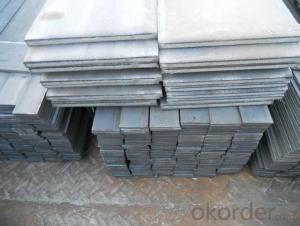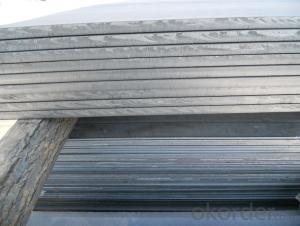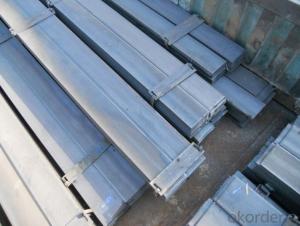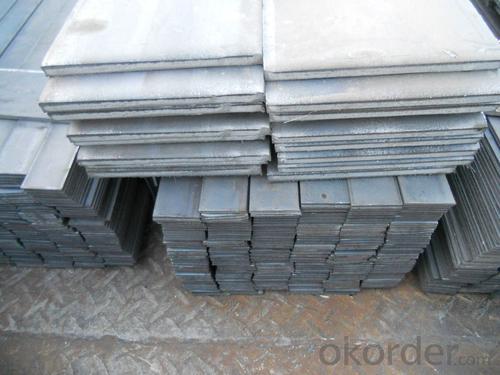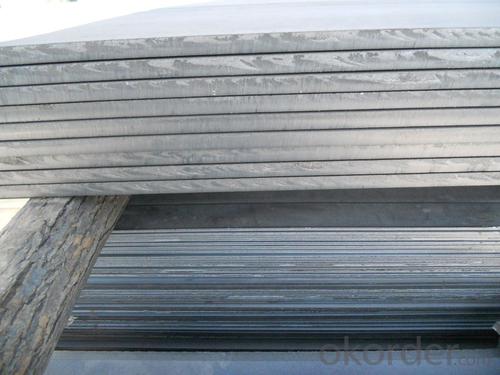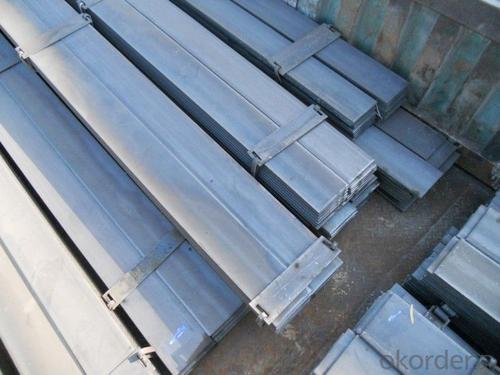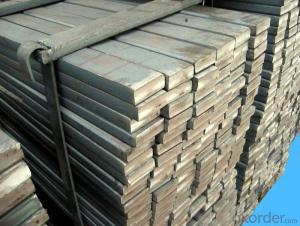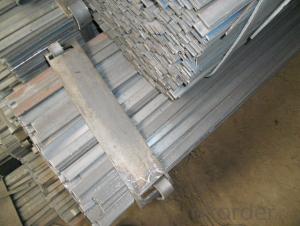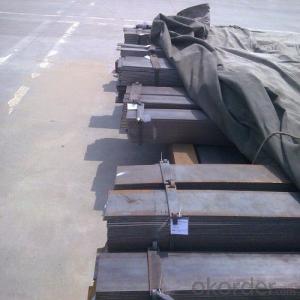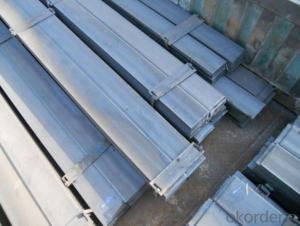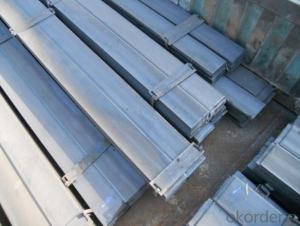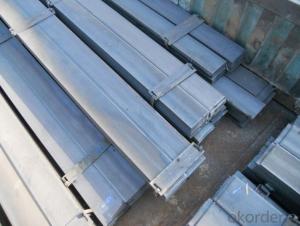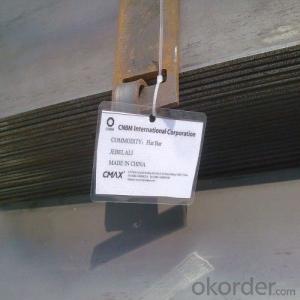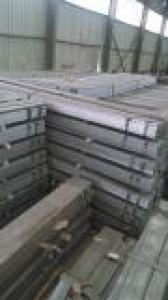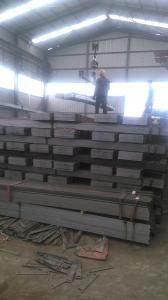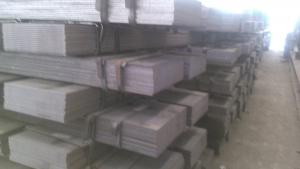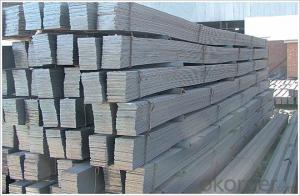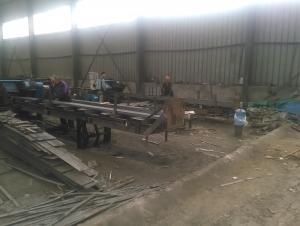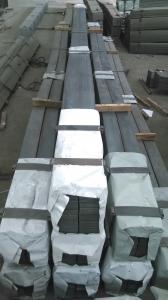Seel Flat Bars with Material Grade Q235 and Good price
- Loading Port:
- Tianjin
- Payment Terms:
- TT OR LC
- Min Order Qty:
- 25 m.t.
- Supply Capability:
- 10000 m.t./month
OKorder Service Pledge
OKorder Financial Service
You Might Also Like
Product Description:
OKorder is offering high quality Flat Bar at great prices with worldwide shipping. Our supplier is a world-class manufacturer of steel, with our products utilized the world over. OKorder annually supplies products to European, North American and Asian markets. We provide quotations within 24 hours of receiving an inquiry and guarantee competitive prices.
Product Applications:
Flat Bars are ideal for structural applications and are widely used in the construction of buildings and bridges, and the manufacturing, petrochemical, and transportation industries.
Product Advantages:
OKorder's Flats Barare durable, strong, and resist corrosion.
Main Product Features:
· Premium quality
· Prompt delivery & seaworthy packing (30 days after receiving deposit)
· Corrosion resistance
· Can be recycled and reused
· Mill test certification
· Professional Service
· Competitive pricing
Product Specifications:
Manufacture: Hot Rolled
Grade: Q195 – 235
Certificates: ISO, SGS, BV, CIQ
Length: 6m – 12m, as per customer request
Packaging: Export packing, nude packing, bundled
Chemical composition of Q235
Alloy No | Grade | Element(%) | ||||
C
| Mn
| S
| P
| Si
| ||
Q235
|
B
|
0.12—0.20 |
0.3—0.7 |
≤0.045 |
≤0.045
|
≤0.3
|
Physical properties of Q235
Alloy No | Grade | Yielding strength point(Mpa) | Tensile strength (Mpa) | Elongation after fracture(%) | ||||||
Thickness (mm) | Thickness (mm) | |||||||||
≤16 | >16--40 | >40--60 | >60--100 | ≤16 | >16--40 | >40--60 | >60--100 | |||
≥ | ≥ | |||||||||
Q235 |
B |
235 |
225 |
215 |
205 |
375--500 |
26 |
25 |
24 |
23 |
FAQ:
Q1: How soon can we receive the product after purchase?
A1: Within three days of placing an order, we will begin production. The specific shipping date is dependent upon international and government factors, but is typically 7 to 10 workdays.
Q2: How do we guarantee the quality of our products?
A2: We have established an advanced quality management system which conducts strict quality tests at every step, from raw materials to the final product.
Q3: What is the normal tolerance of Hot Rolled Mild Steel flat bar?
A3: Normally 7%-9%, but we can also produce the goods according to the customers' requests.
Images:
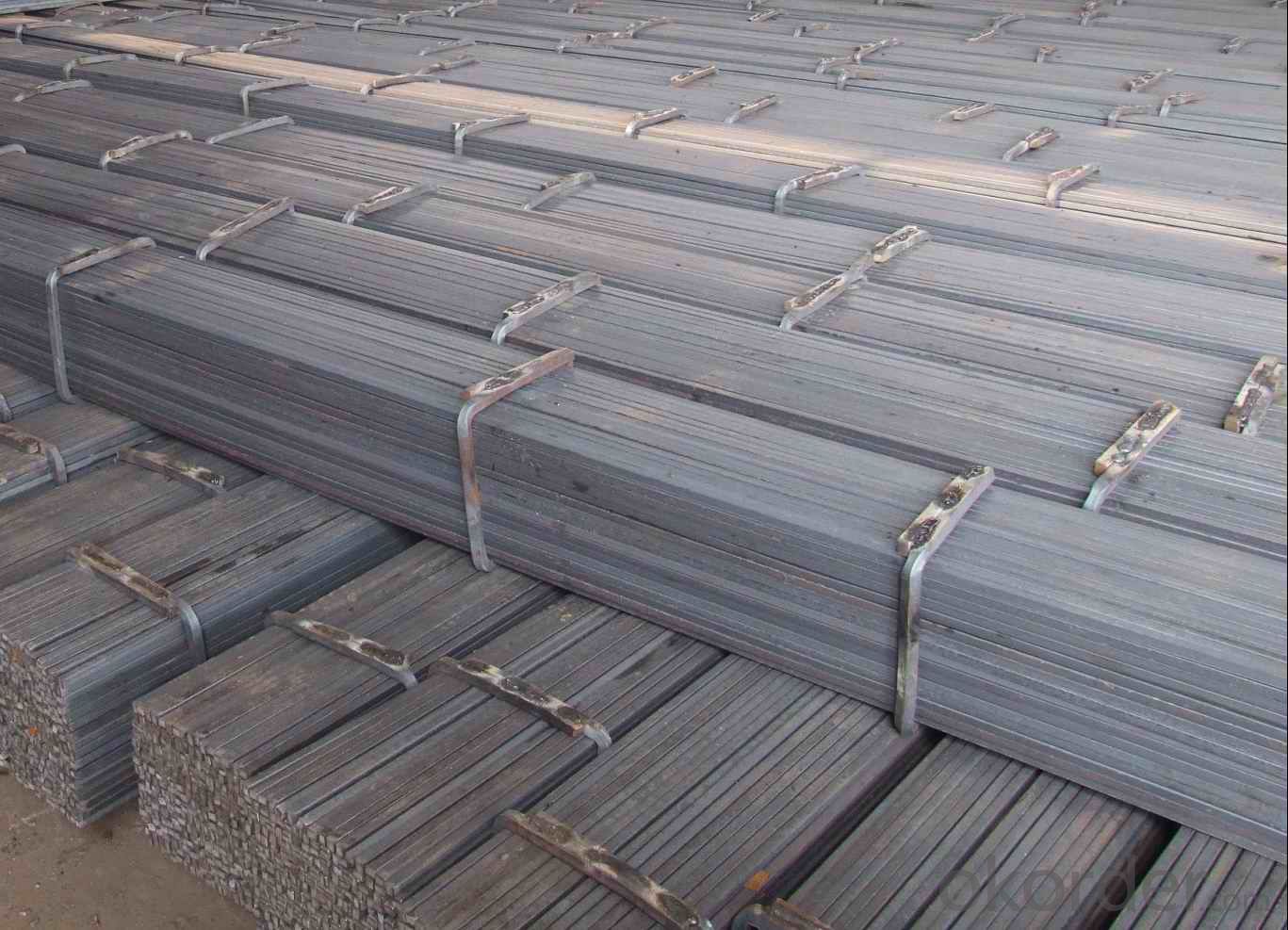
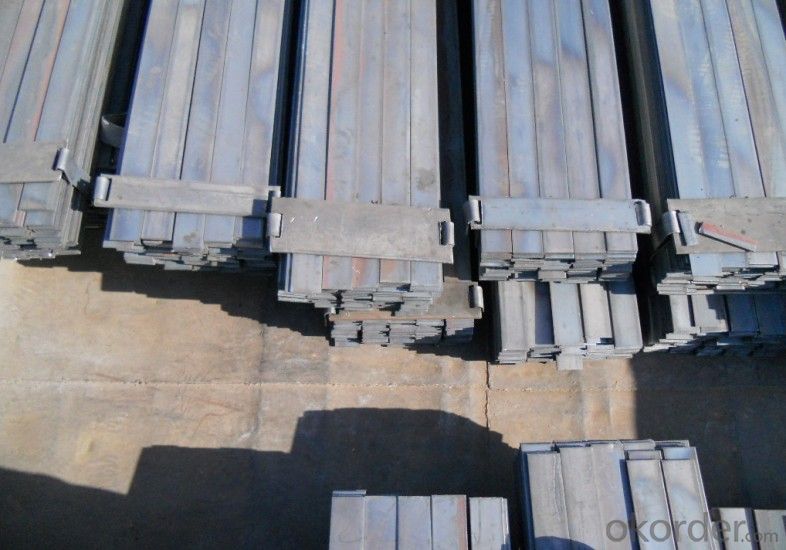
- Q: Can steel flat bars be used for making frames or structures?
- Yes, steel flat bars can be used for making frames or structures. They are commonly used in construction, engineering, and manufacturing industries due to their strength, durability, and versatility. Steel flat bars provide excellent support and stability, making them suitable for various applications such as building frames, bridges, machinery, and supports for structures.
- Q: What are the different grades of steel used for flat bars?
- There are several grades of steel used for flat bars, including low carbon steel (1018, A36), medium carbon steel (1045), high carbon steel (1095), alloy steel (4140), and stainless steel (304, 316). The choice of grade depends on the specific application and desired properties such as strength, durability, and corrosion resistance.
- Q: How do steel flat bars perform in corrosive or acidic environments?
- Steel flat bars can be susceptible to corrosion in corrosive or acidic environments. The extent of their performance would depend on the type of steel used and any additional protective coatings applied. However, in general, steel flat bars may require regular maintenance and protective measures to prevent or minimize corrosion in such environments.
- Q: How do you protect steel flat bars from chemical exposure?
- To protect steel flat bars from chemical exposure, there are several measures you can take. 1. Coating: Applying a protective coating is one of the most effective ways to shield steel flat bars from chemical exposure. There are various types of coatings available, such as epoxy, polyurethane, or zinc-based coatings, that can provide a barrier between the steel and the chemicals. These coatings should be carefully selected based on the specific chemicals the steel will be exposed to and their compatibility with the coating material. 2. Galvanization: Galvanizing the steel flat bars can offer excellent protection against chemical exposure. This process involves coating the steel with a layer of zinc, which acts as a sacrificial barrier. When the steel comes into contact with chemicals, the zinc coating corrodes instead of the steel, preventing direct chemical attack. 3. Stainless steel: Using stainless steel flat bars, particularly those made from corrosion-resistant grades such as 316 or 304, can provide excellent resistance to chemical exposure. Stainless steel contains a minimum of 10.5% chromium, which forms a protective oxide layer on its surface, preventing corrosion by most chemicals. 4. Proper storage: Storing steel flat bars in a controlled environment can help minimize chemical exposure. Ideally, the storage area should be dry, well-ventilated, and free from any direct contact with corrosive substances. Additionally, proper stacking and separation of different materials can prevent chemical reactions and potential damage. 5. Regular maintenance: Regular inspection and maintenance are essential to ensure the continued protection of steel flat bars from chemical exposure. Any signs of coating damage or corrosion should be addressed promptly. Cleaning the surface using appropriate methods and products can help remove any chemical residues and maintain the integrity of the protective measures. It is important to note that the specific protective measures will depend on the type and concentration of chemicals the steel flat bars will be exposed to. Therefore, consulting with corrosion and material experts or referring to industry standards and guidelines can provide more tailored recommendations for protecting steel flat bars in a specific chemical environment.
- Q: What are the different methods of surface protection for steel flat bars?
- To prevent corrosion and damage, there are multiple methods available for surface protection of steel flat bars. Some of the commonly used techniques are as follows: 1. Galvanization: The steel flat bars can be coated with a layer of zinc using either hot-dip galvanizing or electroplating. This zinc layer acts as a sacrificial barrier, safeguarding the steel against rust and corrosion. 2. Powder coating: By electrostatically applying powdered paint to the steel flat bars and subsequently heating them, a durable and protective coating is formed. This powder coating offers excellent resistance against scratches, chipping, and fading. 3. Painting: Another effective surface protection method involves painting the steel flat bars with a suitable primer and topcoat. The primer helps the paint adhere to the steel, while the topcoat provides a protective layer against corrosion, UV radiation, and other environmental factors. 4. Varnishing: To reduce the risk of corrosion, a clear coating is applied to the surface of the steel flat bars. This varnish forms a protective film, preventing moisture and air from reaching the steel. 5. Epoxy coating: In industrial and marine applications, epoxy coatings are commonly used due to their exceptional resistance to chemicals, moisture, and abrasion. These coatings can be applied as a single or multiple layer system, offering long-lasting and durable protection for steel flat bars. 6. Metal plating: To protect steel flat bars from corrosion, metal plating such as chrome or nickel plating can be applied. This process involves depositing a layer of metal onto the surface of the bars, creating a barrier against moisture and oxidation. 7. Anodizing: Although commonly used for aluminum, anodizing can also be applied to steel flat bars. This process involves electrolysis to create a controlled oxide layer on the steel's surface. The resulting layer enhances corrosion resistance and can be further sealed with a protective coating. Choosing the most suitable surface protection method depends on the specific application, environment, and desired durability of the steel flat bars. Regular maintenance and inspection are essential to ensure the ongoing effectiveness of the chosen protection method.
- Q: Are steel flat bars used in the construction of bridges?
- Yes, steel flat bars are commonly used in the construction of bridges. Flat bars, also known as flat steel, are often utilized as structural components in bridge construction due to their strength, durability, and versatility. These bars are typically made from carbon steel, which provides the required strength to support the weight and load of the bridge. Steel flat bars are used in various bridge components, including beams, trusses, and decking. They are often incorporated into the structural framework to distribute the load and provide stability, ensuring the bridge's overall integrity. Additionally, steel flat bars are highly resistant to corrosion, making them suitable for outdoor applications where bridges are exposed to environmental elements. Overall, steel flat bars play a crucial role in the construction of bridges, contributing to their strength, stability, and longevity.
- Q: Are steel flat bars easy to work with?
- Steel flat bars are widely recognized as being easy to work with. They possess versatility and can be effortlessly cut, drilled, welded, and shaped to suit different uses. With their consistent shape and availability in various thicknesses, widths, and lengths, steel flat bars are appropriate for a broad array of projects. Furthermore, their commendable strength and durability have made them highly favored in construction, manufacturing, and do-it-yourself endeavors. Nevertheless, it is crucial to acknowledge that handling steel flat bars may necessitate specific tools and expertise, and safety precautions should be implemented.
- Q: Can steel flat bars be used for manufacturing construction equipment?
- Certainly, construction equipment can indeed be manufactured using steel flat bars. Due to their versatility and strength, steel flat bars are highly suitable for a multitude of applications, particularly within the construction industry. They are capable of fabricating numerous components for construction equipment, including frames, supports, brackets, and reinforcements. Moreover, steel flat bars possess the ability to endure substantial loads, ensuring structural stability, while also exhibiting resistance against corrosion. Consequently, when it comes to producing construction equipment that must withstand rigorous working conditions, steel flat bars prove to be an ideal choice.
- Q: What are the common methods of surface treatment for steel flat bars?
- There are several common methods of surface treatment for steel flat bars that are widely used in various industries. These methods are employed to enhance the properties of the steel, improve its appearance, and protect it from corrosion. 1. Hot-dip galvanizing: This is one of the most popular methods of surface treatment for steel. In this process, the steel flat bars are dipped into a bath of molten zinc, which forms a protective coating on the surface of the steel. This coating provides excellent corrosion resistance and durability to the steel. 2. Powder coating: Powder coating is a dry finishing process where a fine powder is electrostatically applied to the surface of the steel flat bars. The coated bars are then heated to fuse the powder into a smooth and durable coating. Powder coating provides a wide range of color options, excellent resistance to corrosion, and a uniform finish. 3. Electroplating: Electroplating involves the deposition of a thin layer of metal onto the surface of the steel flat bars using an electric current. Common metals used for electroplating include zinc, nickel, and chrome. This method provides a decorative finish, enhances the corrosion resistance of the steel, and improves its wear resistance. 4. Passivation: Passivation is a chemical treatment that is used to remove surface contaminants from the steel flat bars and create a passive oxide layer. This layer improves the corrosion resistance of the steel by preventing the formation of rust. Passivation is often used in combination with other surface treatments to enhance their effectiveness. 5. Painting: Painting is a widely used surface treatment method for steel flat bars. It involves the application of a paint or coating to the surface of the bars to protect them from corrosion and improve their appearance. Different types of paints, such as epoxy, polyurethane, or enamel, may be used depending on the specific requirements of the application. Overall, these common methods of surface treatment for steel flat bars offer various benefits such as corrosion resistance, improved appearance, and enhanced durability. The choice of the method depends on factors such as the intended application, budget, and desired surface finish.
- Q: Do lightning protection, lead out of the galvanized round steel, flat steel needs to be inspected?
- No, when purchasing hot galvanized round steel and flat steel, please offer the factory certificate and inspection certificate.
Send your message to us
Seel Flat Bars with Material Grade Q235 and Good price
- Loading Port:
- Tianjin
- Payment Terms:
- TT OR LC
- Min Order Qty:
- 25 m.t.
- Supply Capability:
- 10000 m.t./month
OKorder Service Pledge
OKorder Financial Service
Similar products
Hot products
Hot Searches
Related keywords
